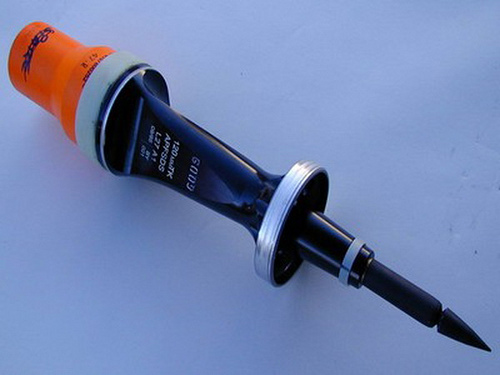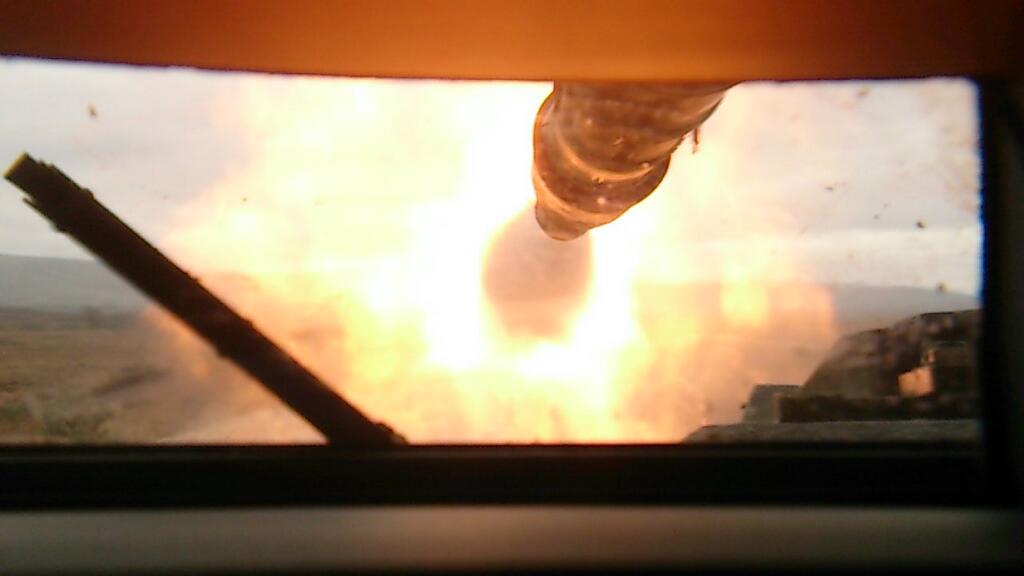Some Basic facts: CHARM 3 depleted uranium anti-tank used by Challenger 2 is not "nuclear". It is also not coming from US for very good reasons: US doesn't use it nor make it. They have their own DU types, NOT compatible with Challenger 2's 2-piece ammo because they are 1-piece. 

Like all armor-piercing ammunition of this kind, CHARM 3 does NOT explode. Doesn't contain explosive at all. It pierces armour by means of speed & mass. DU has great density and once appropriately treated becomes a better penetrator than next best option which is tungsten steel. 



Only explosive part of CHARM 3 is the launch charge which is used to fire it (the large orange cylinder). CHARM 3 is stored in the back of the turret and needs no particular protection as, again, is not explosive. Launch charges are stored below the turret ring in sealed bins. 

CHARM 3 is expensive, precious, and no longer in production, so training is actually done with a steel rod projectile, not with the actual CHARM 3. Note the color blue: if you see blue in NATO weaponry, it means it's a training/inert weapon. In short: no DU if it is blue. 







For general interest purpose, going to the right of image we see the rest of the CR2's weaponry: the white bag is the launch charge for the Smoke shell (next to it) and the HESH (High Explosive Squashing Head) shell, next again. The "coke can" is a smoke grenade for concealment. 

Obviously, as i said earlier, Blue means training/inert: in photo you see HESH trg rounds. HESH kills by squishing itself against armour and exploding. Force of blast causes spalling, aka the separation of fragments on the inside. The tank's own armour becomes the tank's enemy. 



While HESH is no longer as effective as it used to be as an anti-armour solution (anti-spalling solutions got good over time) it works plenty good against structures. Challenger 2's gun offers better elevation/depression than several of its peers, which isn't a bad thing in urban 

Now, i said Challenger 3 ammunition is 2-piece but it is technically 3-piece. A special cartridge, in fact, is fired from the breech of L30 cannon to ignite the launch charge. You can see said cartridges in the left photo and a magazine of them between the Smoke and HESH shells. 



A magazine of cartridges is inserted into the breech of the L30 cannon and after the first shot the cartridges are loaded automatically without the loader having to touch them again. Some cartridge action can be observed in this turret simulator during training. 

HESH was the reason for the controversial rifling of the L30 cannon (and its predecessor L11 on the CHIEFTAIN, which was the first 120mm in NATO back in its days). Big HESH round, more explosive, more explosive = more spalling / spalling effect even through very thick armour. 

Now Armor Piercing, Fin-Stabilized, Discarding Sabot ammo fired from a smoothbore for maximum speed is best, but for a long time HESH was. And at one point British Army was "playing" with 183 mm guns of naval derivation to fire VERY BIG HESH to really shit on soviet heavy tanks. 

Arguably, the British Army by the end of World War 2 had had absolutely enough of guns which struggled to hole enemy heavy tanks at long range. A multitude of post-war projects for heavy tank destroyers with massive cannons to deal with soviet heavies tell you what the mood was!
• • •
Missing some Tweet in this thread? You can try to
force a refresh
















